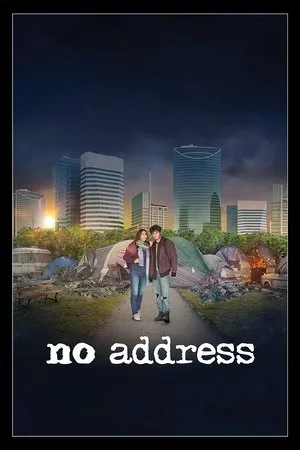No Address, a poignant drama set in 2025, delves into the lives of individuals who unexpectedly find themselves without a place to call home. The film paints a stark and unflinching portrait of homelessness, exploring the challenges, hardships, and unexpected bonds that emerge when people are forced to live on the fringes of society. At its core, No Address is a story about survival. The characters are not simply victims of circumstance; they are resilient individuals who refuse to be defined by their lack of housing. They band together, forming an unconventional family that provides them with the support, companionship, and sense of belonging that they desperately need. This makeshift family becomes their lifeline, helping them to navigate the daily struggles of street life and to maintain their dignity in the face of adversity. The film does not shy away from depicting the harsh realities of homelessness. The characters face constant threats from a harassing gang, who prey on their vulnerability and seek to exploit them. They also encounter prejudice and judgment from an unforgiving community, who often view them as a nuisance or a threat. And they are constantly under the watchful eye of local authorities, who may see them as a problem to be managed rather than as individuals in need of help. Despite these challenges, the characters in No Address never lose their humanity. They find moments of joy, laughter, and connection amidst the hardship. They support each other, share their stories, and offer each other a sense of hope. The film reminds us that even in the darkest of circumstances, the human spirit can endure. No Address also explores important social themes. It raises questions about the causes of homelessness, the ways in which society treats its most vulnerable members, and the importance of compassion and understanding. The film challenges viewers to confront their own biases and assumptions about homelessness and to consider the systemic factors that contribute to this complex problem. The film’s setting in 2025 adds another layer of complexity. It suggests that homelessness is not just a problem of the present, but also a challenge that will continue to confront society in the future. By setting the film in the near future, the filmmakers are urging viewers to take action now to address the root causes of homelessness and to create a more just and equitable society. The performances in No Address are uniformly strong. The actors bring a sense of authenticity and vulnerability to their roles, making the characters feel real and relatable. The film’s direction is also impressive. The director creates a visually compelling and emotionally resonant world that draws viewers into the lives of the characters. The cinematography is gritty and realistic, capturing the harshness of street life without romanticizing it. The film’s score is also effective, adding to the emotional impact of the story. Overall, No Address is a powerful and moving film that will stay with viewers long after the credits have rolled. It is a story about survival, resilience, and the enduring power of human connection in the face of adversity. It is also a call to action, urging viewers to confront the problem of homelessness and to work towards creating a more just and compassionate society. Welovecinema.top highly recommends this film to anyone who is interested in social issues, human stories, or thought-provoking cinema. It is a film that will challenge your assumptions, touch your heart, and inspire you to make a difference.

No Address (2025)
In "No Address" (2025), a diverse group of people find themselves unexpectedly homeless and form an unlikely family. They navigate the harsh realities of street life, battling not only the elements but also a relentless gang, a judgmental community, and the ever-watchful local authorities. Their story is one of survival, resilience, and the enduring power of human connection in the face of adversity. The film explores themes of social isolation, prejudice, and the search for dignity in a world that often overlooks the marginalized.











